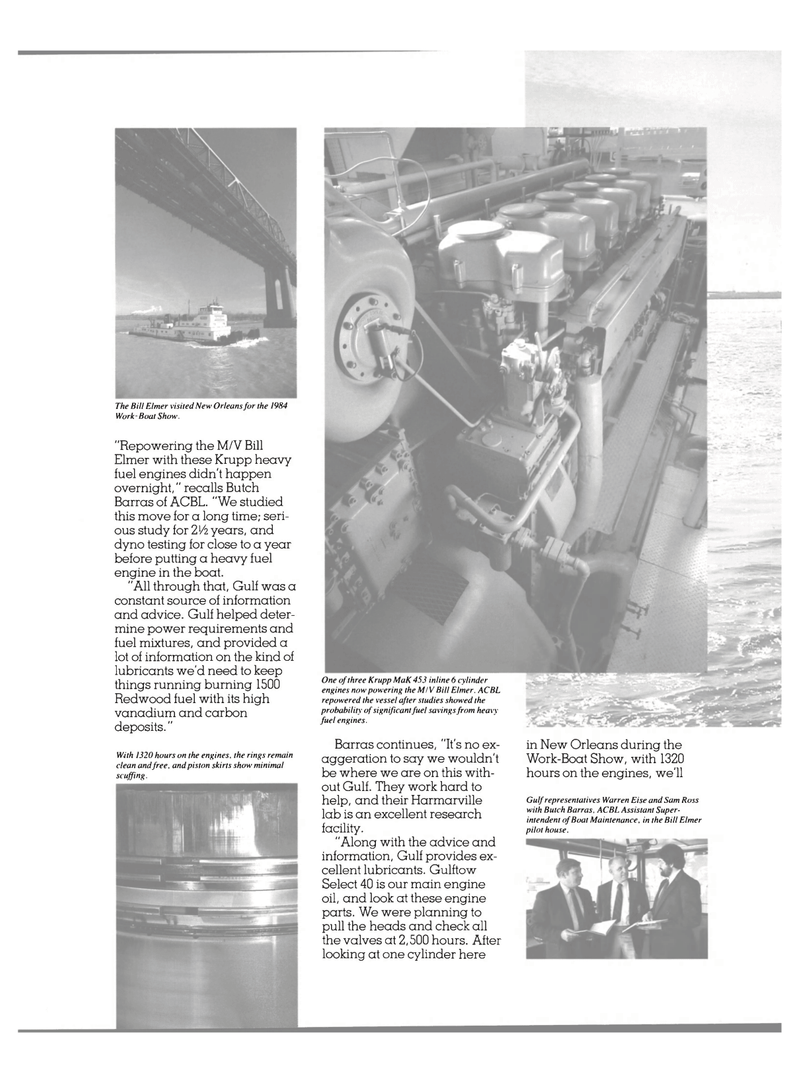
Page 26: of Maritime Reporter Magazine (December 1984)
Read this page in Pdf, Flash or Html5 edition of December 1984 Maritime Reporter Magazine
The Bill Elmer visited New Orleans for the 1984
Work-Bout Show. "Repowering the M/V Bill
Elmer with these Krupp heavy fuel engines didn't happen overnight," recalls Butch
Barras of ACBL. "We studied this move for a long time; seri- ous study for 2l/i years, and dyno testing for close to a year before putting a heavy fuel engine in the boat. "All through that, Gulf was a constant source of information and advice. Gulf helped deter- mine power requirements and fuel mixtures, and provided a lot of information on the kind of lubricants we'd need to keep things running burning 1500
Redwood fuel with its high vanadium and carbon deposits."
With 1320 hours on the engines, the rings remain clean and free, and piston skirts show minimal scuffing.
Barras continues, "It's no ex- aggeration to say we wouldn't be where we are on this with- out Gulf. They work hard to help, and their Harmarville lab is an excellent research facility. "Along with the advice and information, Gulf provides ex- cellent lubricants. Gulftow
Select 40 is our main engine oil, and look at these engine parts. We were planning to pull the heads and check all the valves at 2,500 hours. After looking at one cylinder here in New Orleans during the
Work-Boat Show, with 1320 hours on the engines, we'll
Gulf representatives Warren Eise and Sam Ross with Butch Barras, ACBL Assistant Super- intendent of Boat Maintenance, in the Bill Elmer pilot house.
One of three Krupp MaK 453 inline 6 cylinder engines now powering the MIV Bill Elmer. ACBL repowered the vessel after studies showed the probability of significant fuel savings from heavy- fuel engines.

 25
25

 27
27
